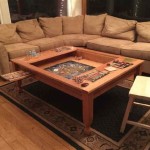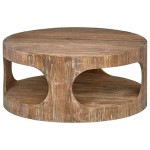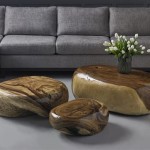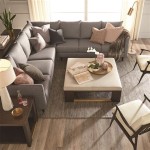Coffee Table in Dining Room: An Unconventional Design Choice
The conventional understanding of dining room furniture centers around a dining table, chairs, and perhaps a sideboard or china cabinet. However, interior design trends are constantly evolving, pushing the boundaries of traditional norms and encouraging homeowners to explore unconventional solutions. One such departure from the norm is the incorporation of a coffee table into the dining room space. While seemingly counterintuitive, the presence of a coffee table can offer a range of functional and aesthetic benefits, provided it is carefully considered and implemented. This article delves into the various aspects of integrating a coffee table into a dining room, examining its potential advantages, challenges, and design considerations.
Exploring the Functional Possibilities
The primary function of a dining room is to facilitate meals and social gatherings. Introducing a coffee table into this space can augment these functions and introduce new possibilities:
Buffer Zone and Pre-Dinner Staging: A coffee table placed near the entrance to the dining room can serve as a transitional zone between other areas of the house and the formal dining space. It can act as a convenient surface for setting down drinks, appetizers, or decorative items like floral arrangements before a meal begins. This helps to prevent clutter on the main dining table and provides a designated area for pre-dinner socializing.
Informal Dining and Beverage Service: In households where formal dining is not a daily occurrence, a coffee table can provide a more relaxed and informal setting for casual meals, snacks, or beverages. Instead of using the entire dining table, the coffee table can become the focal point for these informal occasions. The height difference may necessitate seated on cushions or floor seating, creating a more intimate and unconventional dining experience.
Supplemental Serving Space: During large gatherings or holiday meals, available surface area often becomes a premium. A coffee table can act as a supplementary serving space for buffet-style meals. Platters, serving bowls, and utensils can be artfully arranged on the coffee table, alleviating pressure on the main dining table and allowing guests to serve themselves with ease. It's crucial to ensure the coffee table is sturdy enough to support the weight of the serving dishes.
Decorative Display and Ambiance: Beyond its functional uses, a coffee table provides an opportunity to enhance the aesthetic appeal of the dining room. It can be used to display decorative objects, such as sculptures, vases, or coffee table books, adding visual interest and personality to the space. The coffee table can also be used to anchor a focal point, such as a large piece of artwork, enhancing the overall ambiance of the room.
Addressing Practical Considerations
While the idea of a coffee table in a dining room might be appealing, it’s essential to consider the practical implications and potential drawbacks:
Space Constraints: The size of the dining room is a critical factor. Incorporating a coffee table into a small dining room can make the space feel cramped and difficult to navigate. Careful consideration must be given to the dimensions of the room and the placement of other furniture to ensure there is adequate walking space and that the coffee table does not obstruct traffic flow. A larger dining room can accommodate a coffee table more gracefully.
Height and Ergonomics: The typical height of a coffee table is significantly lower than that of a dining table. This height difference can pose challenges in terms of ergonomics and practicality. Using a coffee table for dining typically requires sitting on the floor or on low cushions, which might not be comfortable for all individuals, particularly those with mobility issues. It's important to consider potential users of the space and their physical limitations. Adjustable height coffee tables or lift-top coffee tables can mitigate this issue, allowing the height to be adjusted for dining purposes.
Style and Aesthetics: The style of the coffee table must complement the overall design aesthetic of the dining room. A mismatch in styles can create a jarring and visually unappealing effect. Consider the materials, colors, and design elements of the existing furniture and select a coffee table that harmonizes with the overall décor. A sleek, modern coffee table might be suitable for a contemporary dining room, while a rustic wooden coffee table might be more appropriate for a farmhouse-style dining room.
Maintenance and Durability: Coffee tables used in a dining room setting are likely to be subjected to spills and stains. The material of the coffee table should be durable and easy to clean. Opt for materials that are stain-resistant and water-resistant, such as sealed wood, glass, or metal. Regular cleaning and maintenance are essential to keep the coffee table looking its best and to prevent damage.
Design and Placement Strategies
Successful integration of a coffee table into a dining room requires careful planning and execution. Here are some design and placement strategies to consider:
Strategic Placement: Avoid placing the coffee table directly in the center of the dining room. Instead, position it off to the side, near a seating area or a window. This placement allows for unobstructed access to the dining table while still providing a functional and aesthetic element. Position the coffee table so that it doesn’t impede the flow of traffic within the dining room.
Defining Zones: Using a coffee table is an effective method of creating distinct zones within a larger dining room. For instance, a coffee table positioned near a window with comfortable seating can create a designated reading or relaxation area. This helps to make the dining room more versatile and multi-functional.
Selecting the Appropriate Size and Shape: The size and shape of the coffee table should be proportional to the size of the dining room and the other furniture in the space. A large, rectangular coffee table might overwhelm a small dining room, while a small, round coffee table might get lost in a larger space. Consider the shape of the dining table and choose a coffee table shape that complements it. For example, if the dining table is rectangular, a round or oval coffee table can create a visual contrast and prevent the space from feeling too boxy.
Incorporating Storage: Coffee tables with built-in storage, such as drawers or shelves, can be particularly useful in a dining room. This storage space can be used to store extra linens, serving utensils, or decorative items, helping to keep the dining room clutter-free. Lift-top coffee tables offer hidden storage and a raised surface for dining or working.
Layering Textures and Materials: Creating visual interest by layering textures and materials is essential. Combine different textures, such as wood, metal, and glass, to create a visually appealing and tactile experience. For example, a wooden coffee table can be paired with metal accents or a glass tabletop to add depth and dimension to the space.
Accessorizing Thoughtfully: Select accessories that complement the overall design scheme of the dining room. Consider the colors, patterns, and textures of the accessories to create a cohesive and harmonious look. Use decorative trays, candles, books, and plants to add personality and visual interest to the coffee table.
Considering Alternative Seating: A coffee table in a dining room often necessitates alternative seating options. Floor cushions, poufs, or low benches can provide comfortable and stylish seating around the coffee table. These seating options can be easily moved and rearranged to accommodate different needs and gatherings.
Lighting Considerations: Ensure adequate lighting around the coffee table area. A floor lamp or table lamp can provide task lighting for reading or working. Consider the color temperature and brightness of the lighting to create a warm and inviting ambiance.
In conclusion, while the concept of a coffee table in a dining room may seem unconventional, it presents a unique opportunity to enhance the functionality and aesthetic appeal of the space. By carefully considering the practical implications, design strategies, and individual needs, homeowners can successfully integrate a coffee table into their dining room, creating a versatile and stylish environment for dining, socializing, and relaxation. The key is to prioritize space, ergonomics, and overall design coherence to achieve a balanced and harmonious result.

Convertible Coffee To Dining Tables Resource Furniture

5 Pieces Lift Top Coffee Table Set With Storage Convertible Dining Ottomans Homary

How To Build A 2 In 1 Coffee Dining Table Diy Family Handyman

Diy Round Coffee Table Liz Marie Blog

Transforming Coffee Table To Dining In Seconds

Richya Modern Lift Top Coffee Table 3 In 1 Multi Function With Compartment For Living Room Converts To Dining Reception Rustic Brown Com

Convertible Coffee To Dining Tables Resource Furniture

Diy Round Coffee Table Liz Marie Blog

Span Table Coffee To Convertible Dinner Seating 8 Expand Furniture Folding Tables Smarter Wall Beds Space Savers

Richya Modern Lift Top Coffee Table 3 In 1 Multi Function With Compartment For Living Room Converts To Dining Reception Rustic Brown Com
Related Posts








